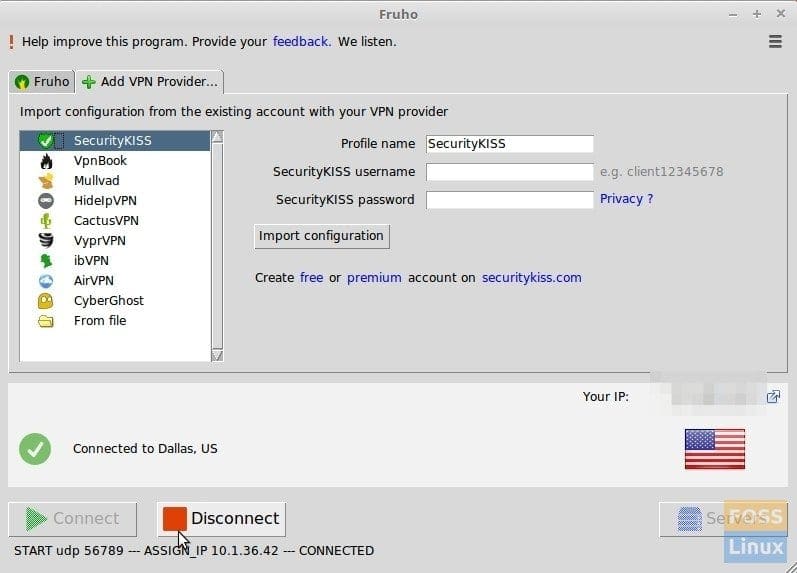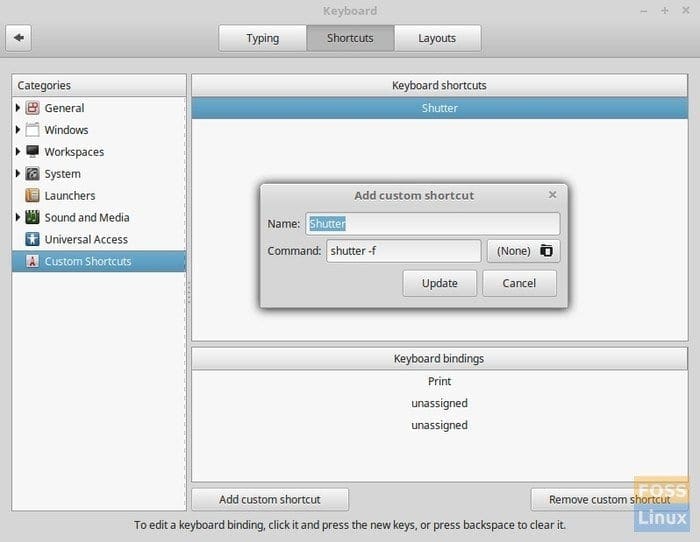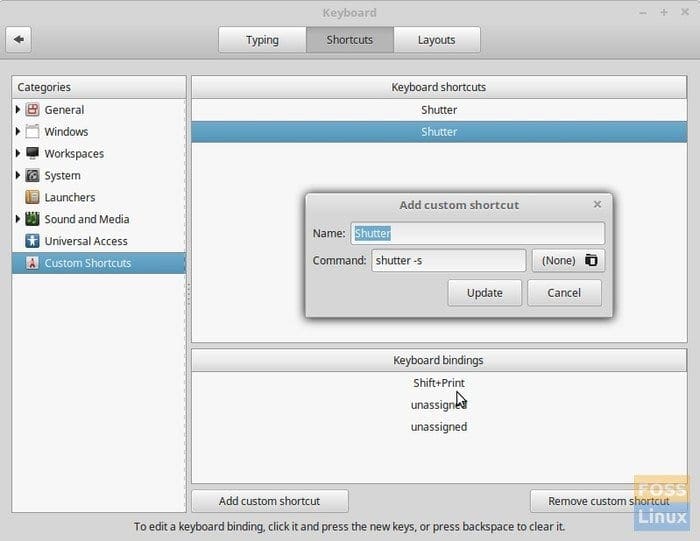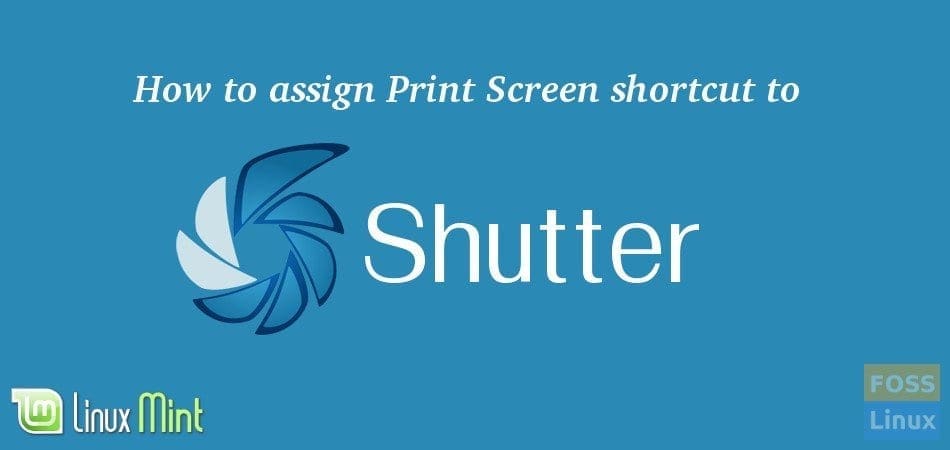By default settings of Linux Mint, the Print Screen key is assigned to the built-in GNOME screen capture tool. If you are a user of Shutter screen capturing application you may want it to take up the ‘PrtSc’ key instead of GNOME screen capture utility.
If you never heard of Shutter, let me quickly tell you that Shutter is a very powerful screen capture utility available from ‘Software Manager’ that comes closest to Snag-it for Windows.
Even after installing Shutter, the Print Screen key will be still assigned to the GNOME screen capture tool. Personally, I prefer ‘Print Screen’ key to be assigned with Shutter. Here are the steps:
STEP 1: Click ‘Menu’, type ‘Keyboard’ and launch ‘Keyboard’ Settings.

Launch Keyboard Settings
STEP 2: Click ‘Custom Shortcuts’ in the left pane and add a custom shortcut. Name it as ‘Shutter’ and give a command as shutter -f and click ‘Add’.

Add Shutter Custom Shortcut
STEP 3: Click on Keyboard bindings section’s first ‘unassigned’ and you will see accelerator turned on. Press ‘PrintSc’ key. You will see a warning that the key is already assigned and will be overwritten. Go ahead and click ‘OK’.
shutter -f command implies Shutter in full-screen capture mode.
Similarly, you can add shutter -s command for selection mode screenshot. You can assign any key. I have used ‘SHIFT PrintSc’ for that mode.

Shutter Selection Mode Screenshot
Tip: Note that Shutter must auto start at login for these key shortcuts to work. If you haven’t done it yet, go to ‘Shutter preferences’ and in the ‘Behavior’ tab and enable ‘Start Shutter at login’. That’s it.


6 comments
Thanks man, exactly what I wanted.
How I can make this changes via Terminal?
Excellent tutuorial, exactly the insturctions I needed.
Thx a lot!
Precisely what I was looking for.
Yes, thanks for this. The info is “mint” 🙂